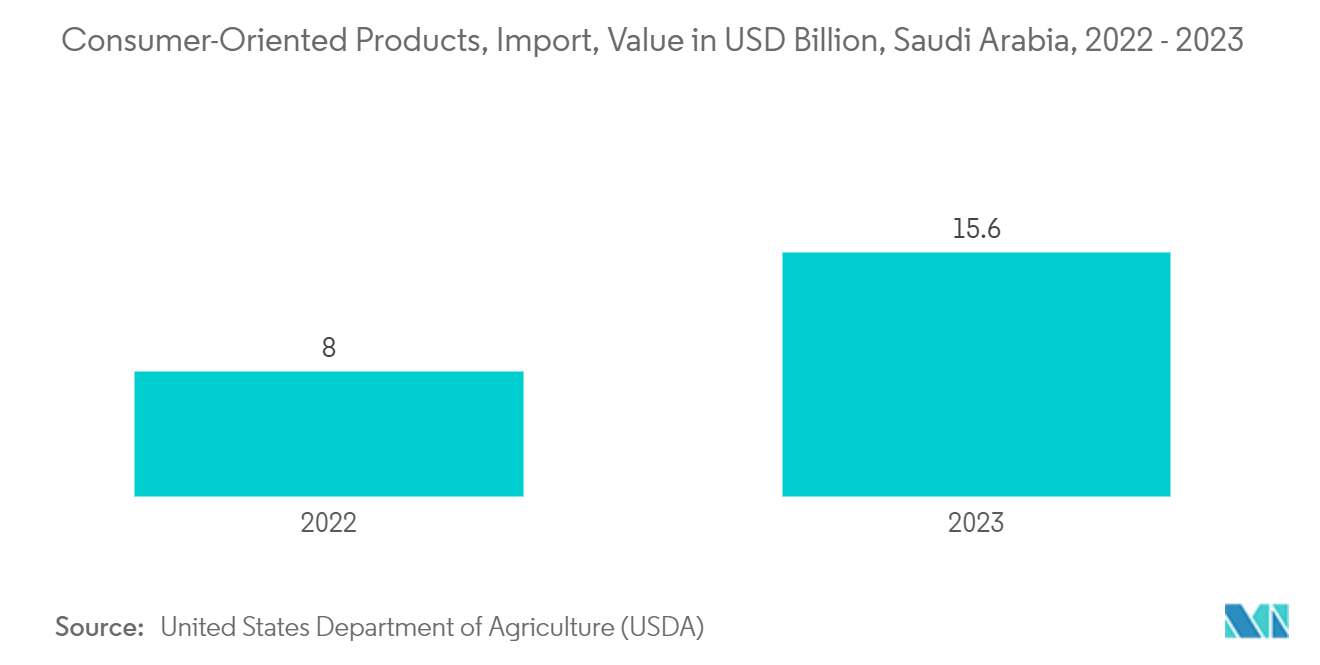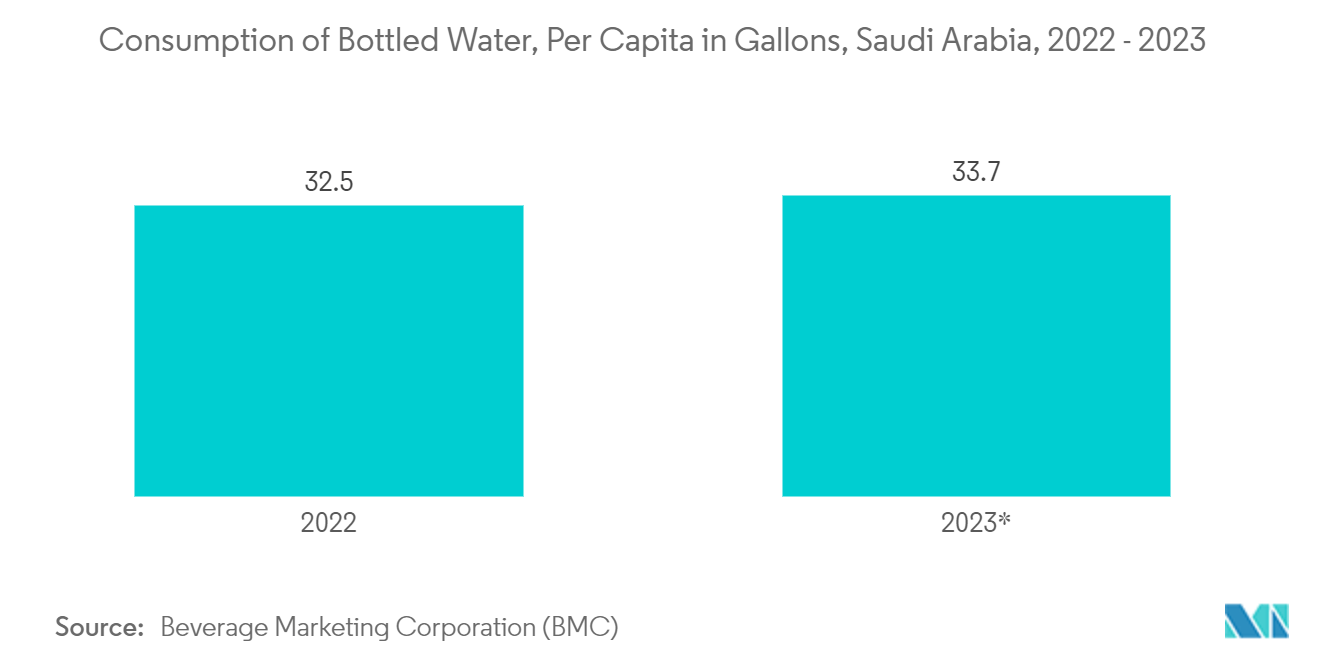Market Trends of Saudi Arabia Plastic Bottles Industry
The Polyethylene Terephthalate (PET) Segment is Estimated to Have the Largest Market Share
- PET has become a vital packaging material among bottle manufacturers across Saudi Arabia. Its versatility in accommodating different shapes and sizes has provided unparalleled alternatives to conventional glass and metal containers, making it a highly desirable choice in the packaging industry to make bottles for beverages, cosmetics, personal care, and industrial applications.
- The growing demand for PET to make bottled water in Saudi Arabia, as it is lightweight, durable, and cost-effective, enhances the market’s growth. According to the International Bottled Water Association Report, about 97% of bottled water bottles are plastic, and nearly 80% of that plastic is polyethylene terephthalate (PET), which significantly boosts the market’s growth.
- The Saudi government is significantly investing in the recycling of PET plastic products to shift toward sustainability and circularity in the plastics industry. In July 2024, Saudi Investment Recycling Co. invested in a joint venture with MVW Lechtenberg & Partner to process approximately 3 million tonnes of plastic to produce refuse-derived fuels, which is likely to contribute to the country's environmental sustainability goals.
- As reported by the USDA, Saudi Arabia stands out as a key market for US food and beverage exports. The nation sources a variety of consumer-oriented products, such as beverages and other food items that require plastic packaging, not only from the United States but also from the United Arab Emirates and several other countries, driving substantial growth in the market studied.

The Beverage Segment is Expected to Dominate the Market
- Saudi Arabia's burgeoning tourism has invigorated its beverage industry. With a ban on alcohol sales and consumption, there has been a notable surge in demand for non-alcoholic beverages, including juices, energy drinks, and soft drinks. As consumer preferences evolve, soft drink manufacturers see a prime opportunity to expand in Saudi Arabia, a move that is poised to drive up the demand for plastic bottles in the years ahead.
- Data from the United States Department of Agriculture (USDA) reveals that Saudi Arabia's food and beverage retail sales hit around USD 58 billion in 2023, with a projected growth of about 4% in 2024. This robust growth in the domestic retail food sector has spurred a parallel expansion in non-alcoholic beverage sales, fueling the overall market growth.
- Moreover, a rising demand for sugar-free and zero-calorie drinks reflects the nation's growing health consciousness. With sugar linked to various health risks, this trend not only boosts the popularity of sugar-free carbonated drinks but also amplifies the market for plastic bottles in Saudi Arabia.
- As religious tourism flourishes and the population grows, so does the consumption of bottled water in Saudi Arabia. Data from the Beverage Marketing Corporation (BMC) positions Saudi Arabia among the top 20 countries in the Middle East for per capita bottled water consumption. Consumption figures rose from 32.5 gallons (123.03 liters) in 2022 to an estimated 33.7 gallons (127.57 liters) in 2023.


